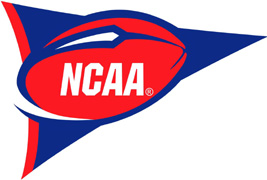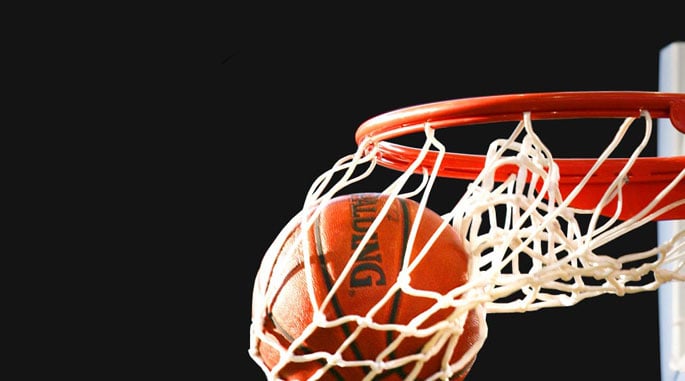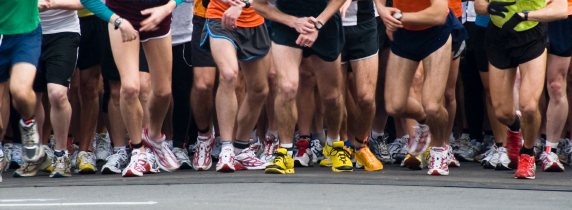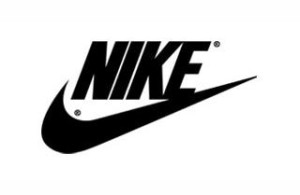Everything I Need to Know About Branding I Learned from College Football

Remember the adage everything I need to know I learned in kindergarten? Well let's think about this in terms of branding; that sentence could easily translate to everything I need to know about branding I learned from college football.
As I've written about in a number of past posts creating a memorable brand experience and creating a strong brand loyalty are the hallmarks of a successful brand, and nowhere will you find a company or product that creates the undying passion and loyalty the way college football teams do.
Point-in-case: When I originally started to write a post tying branding and college football together I was going to list the top ten college football brands (admittedly determined by my own biased ranking system) but quickly decided this was a bad idea based on a number of things.
- Problem #1: The thought of ranking my favorite team (Go Gators!) at anything other than #1 made my skin crawl.
Problem #2: SEC schools would undoubtedly take over the top five (heck the entire top ten would probably be SEC schools in my mind) because in addition to being a Florida fan I'm an SEC fan.
Problem #3: Last but certainly not least, I knew that if I started ranking college teams a debate so heated would break out in the office that I feared our walls would come crashing down like goal posts of yesteryear.
So how do college football teams garner such strong brand experiences and loyalty? It's because when it comes to branding, college football gets it. There is a painstaking attention to detail associated with a college football brand from making sure the correct Pantone color is used for every piece of equipment, apparel and brochure to guarantee consistency to nostalgic activities that create positive brand associations. These nostalgic activities can include a school's unique tailgating traditions and pre-game ceremonies. Every detail is considered, and everything is branded.
But why would a school spend so much time, energy, and money to create these branded experiences? It's simple. A school with a strong brand will continue to attract masses of new students each year (subsequently growing its brand's reach every year), students then graduate, become alumni and alumni become donors to the school. Finally there is the revenue and brand impressions generated from trademark licensing. Schools like the University of Texas, University of Florida, University of Michigan, University of North Carolina, etc. generate millions of dollars each year from licensing revenue alone. The number of impressions brands like these get each year from the sale of licensed apparel and equipment only furthers the awareness and loyalty for brands.
Having a strong brand in college football is more than winning games because even in recent slumps of some the greatest brands in college football their fans have remained true and passionate. It's all about the experience and the passion the fans feel for their brand…I mean team.
So repeat after me: everything I need to know about branding I learned from college football.
Scandals: can they be good for a brand?
That iconic "swoosh" is easily recognized by millions of people around the world as the logo for Nike. Its influence reaches far and its endorsements are many, so it's understandable that devout sports fans (and anyone that watches the news) remembers when Michael Vick lost his Nike endorsement after pleading guilty to dog fighting charges in 2007.
Just one month ago, Nike decided to renew its contract with Vick. The quarterback has had a moderately successful comeback since signing with the Philadelphia Eagles in 2009.
"Michael acknowledges his past mistakes," Nike spokesman Derek Kent told CNBC. "We do not condone those actions, but we support the positive changes he has made to better himself off the field."
Many are upset that Nike may appear to support criminal activity with Vick's contract renewal. This has prompted me to wonder: does disassociating one's brand from a scandal (like Nike did initially) help or hurt a brand?
I believe a brand that disassociates itself from a scandal will flourish or flounder based on how it has already branded itself in the past. If a company has established itself as a smart, successful enterprise, then the public will most likely reference that image and see the disassociation as a tactical move. However, if the company has defined itself as a continuously error-prone brand that dabbles in illicit activities, then the public will see the company as irresponsible for cutting its ties.
Take Disney World, for example. Several people have died on the park's attractions, but is that what you think of when you ride "It's a Small World?" Probably not. Disney is highly adept at branding itself as a provider of wholesome happiness, so it can quickly disregard an issue and move on without a hitch. The public knows that what the Disney brand can offer them outweighs any scandalous slights.
I think Nike ultimately made a wise decision to terminate Vick's contract in 2007. There was a lot of bad blood associated with the controversy, and Nike probably would have received some flak for it. But, if Nike had ridden it out, I think it would not have suffered a devastating blow either. Nike's brand — a profitable, dominant, and powerful sportswear provider — can afford to take a hit. And although many don’t agree with Nike's decision to reinstate Vick, I think we can safely assume that the brand won't be hurting for business anytime soon.
Contributed by Allison Meeks
Brand Endorsement ROI
I’m a Roger Federer fan. I set my alarm to wake up on Sunday (at 9 am) and watch with the hopes of him beating Nadal in the final match of the French Open. Well it wasn’t in the cards this year. But while watching the French Open this past weekend I couldn’t help but notice both Roger and Rafa are Nike men. I’m sure I’ve noticed it before but for some reason this year I was distracted by it and the other brand placements.
Addison Whitney is headquartered in Charlotte, also known as NASCAR headquarters. I think the reason the French Open brand placements were so vivid to me was because I had watched the start of the Coca-Cola 600 the weekend before and was amazed at all of the places a logo could go – behind the steering wheel, all over the cars and on the driver. All I could think of was how is this placement a worthwhile investment? How is the ROI measured and justified? In my head the potential conversation might go like this: Me: “Hi Boss, I’d like to spend $20,000 to put our logo behind Dale Jr’s steering wheel.” Boss: “Beth Anne, no. Get out.”
And then I remembered Michael Jordan and Nike. Who didn’t want to be just like Mike? (Do you remember the Gatorade song? “I wanna be, I wanna be like Mike.”) I won’t lie. Young Beth Anne was decked out in Nike and Chicago Bulls gear despite living in Atlanta.
Are today’s athletes really so influential that they can influence brand preference? NASCAR fans are loyal. But do Denny Hamlin fans only use FedEx as opposed to UPS because he endorses it? Again, I love Roger Federer, but I’m not going to seek out Nike or Gillette over other brands because of his endorsement (in all fairness, I am a woman, not a man so I don’t know if that makes a difference).
What do you think about athlete endorsements and the value? Do these endorsements really make a strong impact on a brand or are they just a means to increase awareness?
And don’t worry your pretty little head Roger, you’ll get him next year at Roland Garros (and hopefully next month at Wimbledon).
Method to the Madness

College basketball season might be over but for the NCAA, March Madness is just beginning.
Last October, the NCAA secured exclusive rights to the term "March Madness" from sports and entertainment marketer Intersport. Many in college athletics weren't even aware of the eight-figure settlement until USA TODAY reported the news in May.
According to USA TODAY, Intersport had retained usage rights to "March Madness" through an agreement with the Illinois High School Association in the early '90s. The IHSA and NCAA once shared the trademark. The IHSA gave up its ownership several years ago, but still kept use of the term in connection with high school basketball championships. However the NCAA considered any other use "detrimental to the trademark."
When asked if $17 million-plus may was too hefty a price tag, Randall Scott--Senior Vice President at Addison Whitney--questioned if an equally profitable alternative name even existed for the basketball tournament. "If you called it something else, would it have the same cachet and familiarity?" he asked.
USA TODAY reports that CBS and Turner are paying $10.8 billion over 14 years to carry the the Division I men's basketball tournament, making it NCAA's most critical source of income.
"Is it worth it?" Scott asked. "Absolutely. The real question is if $17 million was the right number."
24 Hours of Booty

......................................................................................................................................................................
This weekend, more than 1,200 cyclists converged on Charlotte for 24 Hours of Booty. For 24 hours, cyclists rode a nearly three mile loop around the Myers Park neighborhood in a sign of unity against all types of cancer. This annual event raises money for cancer research and survivorship. This year, participants raised more than $1 million!
Addison Whitney’s own Verbal Branding Coordinator Jenna Wise took part in the ride as part of Team Gita. Volunteerism is a large part of the Addison Whitney culture so seven members of our team, along with a few spouses, signed up to help out.
Some people may think of volunteering as something you’re giving an organization, but I’m always amazed at how much I get back from volunteering a few hours of my time. This event was incredibly inspiring. The race began as cancer survivors rode off after an emotional send-off. And then an army of cyclists, some riding in memory of those they’d lost to cancer, and others simply devoted to helping others took off – all 1,200 of them.
This event isn’t about how many laps you’ll ride, it’s about why you ride. The best part of my night was then a father and daughter came over to chat. The young girl proudly told me she was riding for her mom who was a survivor. That’s why you ride.
Olympic Mittens: A Brand in Demand

When my mom called to tell me she was the proud owner of this season's hottest clothing item, I thought she may have bought some boots with the fur. Lo and behold, she got her hands on some of the red Olympic mittens, an early birthday present from my dad. The latest craze, these branded mittens feature a maple leaf on the palm and Olympic rings on the back. Stitched with the words "Vancouver 2010," this collector's item is now one of her favorite keepsakes. To put it bluntly, she thinks she just reached a whole new level of cool.
Evidently, she is not the only fan of these mittens. According to the Vancouver Sun, retailers have sold every last pair. At less than 10 dollars a pair, over 3.5 million pairs were sold over the five month promotion. The profits from the mittens helped fund the Own the Podium Program which launched in 2005 to prepare Canada to become the top winter sporting nation in the world by 2010. More than just a souvenir, the mittens became a top item to show support for the Games.
Oprah Winfrey promoted the red mittens when she handed out 300 pairs to her talk show audience. After expressing her fondness of the mittens, the Vancouver Organizing Committee (VANOC) shipped a box to her studio, drawing further attention to the mittens. Who knew they would create such a stir.
The Olympic brand encompasses all of the names, phrases, marks, logos and designs related to the 2010 Winter Games. What better way to promote this major international event then by sporting some stylish red mittens? They're both affordable and practical!
Contributed by: Ashley Popham
Lowe's Says 'No'
Last year, the Concord, NC street that takes hundreds of thousands of racing fans to Lowe's Motor speedway was re-named Bruton C. Smith Boulevard in honor of the Speedway Motorsports Inc. owner. Next year, the track itself will undergo a name change as well. On Thursday, Lowe's announced that it will not renew its naming rights for the Concord speedway.
Lowe's brokered exclusive naming rights with SMI in 1999, making Lowe's Motor speedway the first major naming-rights deal of a NASCAR track. The partnership has been viewed by many as a success, as the fairly young Lowe's brand has enjoyed exposure to millions of NASCAR fans for nearly a decade. But, but as priorities and budgets shift to survive in the recession, so too will the marketing resources of the company.
According to a NASCAR press release, SMI owner Bruton Smith expects the track to work to find a new title sponsor. If a new sponsor can't be found, the track's name will revert to Charlotte Motor Speedway.
Of course, this is not the only corporate sponsorship to dissolve within the past year. Professional sports across the board are having more trouble holding on to their lucrative deals with companies, specifically those in the financial and automobile industry. With this decline, yet another reflection of a downturned economy, might we see the pendulum swing back to a world of stadiums and fields without corporate monikers?
If so, which sports venues would you like to see returned to their original names?
Contributed by: Maghan Cook
Technology Brands Help Edge Out the Competition

......................................................................................................................................................................
Addison Whitney has two new names and logos to add to its portfolio in the running world: StabilicoreTM, which is a technology brand for New Balance shoes, and Aceba, a Dry Lubricant used in Asics Chafe FreeTM products.
For those who think that Nike is supreme when it comes to athletic footwear, runners will tell you a different story. Runners are very loyal to brands that work, and Asics and New Balance have emerged as trusted names for those who hit the pavement every day.
A quick poll of AW’s running group, “Brand, Sweat and Tears”, revealed the following insights about running brands:
- “I am more loyal to technologies than I am to master brands”
- “I don’t care if it’s popular- I care if it has got the specifics that I need! (e.g. high-arch support)”
- “If I find a technology that works for me, I am more likely to buy other items from that brand (the shoes fit, why not buy the matching shorts and tank!)”
Super Bowl Brands: GoDaddy

......................................................................................................................................................................
Move over Janet Jackson, your wardrobe malfunction isn’t the only risqué entry in the Super Bowl history books. GoDaddy.com, the world’s largest online domain name registrar, will run one 30 second advertisement during the 2009 Super Bowl that will be sure to catch your eye—if it airs.
GoDaddy has a losing record against the FOX network. Last year, Fox refused to air GoDaddy’s “Exposure” ad starring IndyCar® Series driver Danica Patrick. Instead, GoDaddy ran another ad directing viewers to visit the GoDaddy site to see “Exposure”. Also, in 2005 Fox refused to give a GoDaddy ad its encore performance after NFL officials questioned content.
Read more
Super Bowl Brands: Audi
Does Audi Have Another Winner?
Last year, Audi’s Super Bowl spot featured its R8 sport car in a spoof of “The Godfather.” Audi saw quite the ROI on this 60 second spot, earning Audi a second place finish in “total buzz” after the game and successfully drove traffic to Audi’s website.
Audi’s 2008 ad featured the tagline: “Old luxury just got put on notice.” Audi’s ad agency, San Francisco-based Venables Bell & Partners, created this year’s ad though “it’s not public yet.” Rumor has it that is will show a progression through time using vintage to modern models of Audi vehicles. Do you think it will play off the same tagline as last year and focus on modern luxury or will it attempt to win customers over by focusing on the heritage of the brand? Check out the game’s first quarter to see how Audi spins this year’s spot.
By: Rebecca Parker

